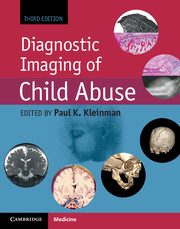Book contents
- Frontmatter
- Dedication
- Contents
- List of Contributors
- Editor’s note on the Foreword to the third edition
- Foreword to the third edition
- Foreword to the second edition
- Foreword to the first edition
- Preface
- Acknowledgments
- List of acronyms
- Introduction
- Section I Skeletal trauma
- Section II Abusive head and spinal trauma
- Section III Visceral trauma and miscellaneous abuse and neglect
- Section IV Diagnostic imaging of abuse in societal context
- Section V Technical considerations and dosimetry
- Index
Foreword to the second edition
Published online by Cambridge University Press: 05 September 2015
- Frontmatter
- Dedication
- Contents
- List of Contributors
- Editor’s note on the Foreword to the third edition
- Foreword to the third edition
- Foreword to the second edition
- Foreword to the first edition
- Preface
- Acknowledgments
- List of acronyms
- Introduction
- Section I Skeletal trauma
- Section II Abusive head and spinal trauma
- Section III Visceral trauma and miscellaneous abuse and neglect
- Section IV Diagnostic imaging of abuse in societal context
- Section V Technical considerations and dosimetry
- Index
Summary
“It is not given to everyone to be an orphan,” deplores Poil de Carotte (Carrot Top), hero of a French novel most of us have read. This wretched boy, our French counterpart to the American Huckleberry Finn, was rejected, neglected, and battered by a mother who nonetheless loved her other children. We have also learned that in past centuries, children were inflicted with severe limb injuries to produce permanent deformities that would make them more efficient beggars. But society tended to consider these facts a good subject for novels and did not appreciate their true frequency. Forgotten were the works of Ambroise Tardieu, a French forensic physician, who in 1860 described the injuries he found in infants or children who died of inflicted trauma. Until the 1940s, these lesions often remained undiagnosed, and when a baby was found dead, the diagnosis of natural “sudden infant death” was commonly accepted.
Radiology has been used in infants and children since its origins, but images were generally of poor quality, often blurred by patient movement. It was with the introduction of newer x-ray tubes enabling shorter exposure times that pediatric radiology made a quantum leap. This improved radiographic technology led to the discovery in 1946 of what the pediatric radiologist John Caffey MD recognized as inflicted trauma.
- Type
- Chapter
- Information
- Diagnostic Imaging of Child Abuse , pp. xiii - xivPublisher: Cambridge University PressPrint publication year: 2015



